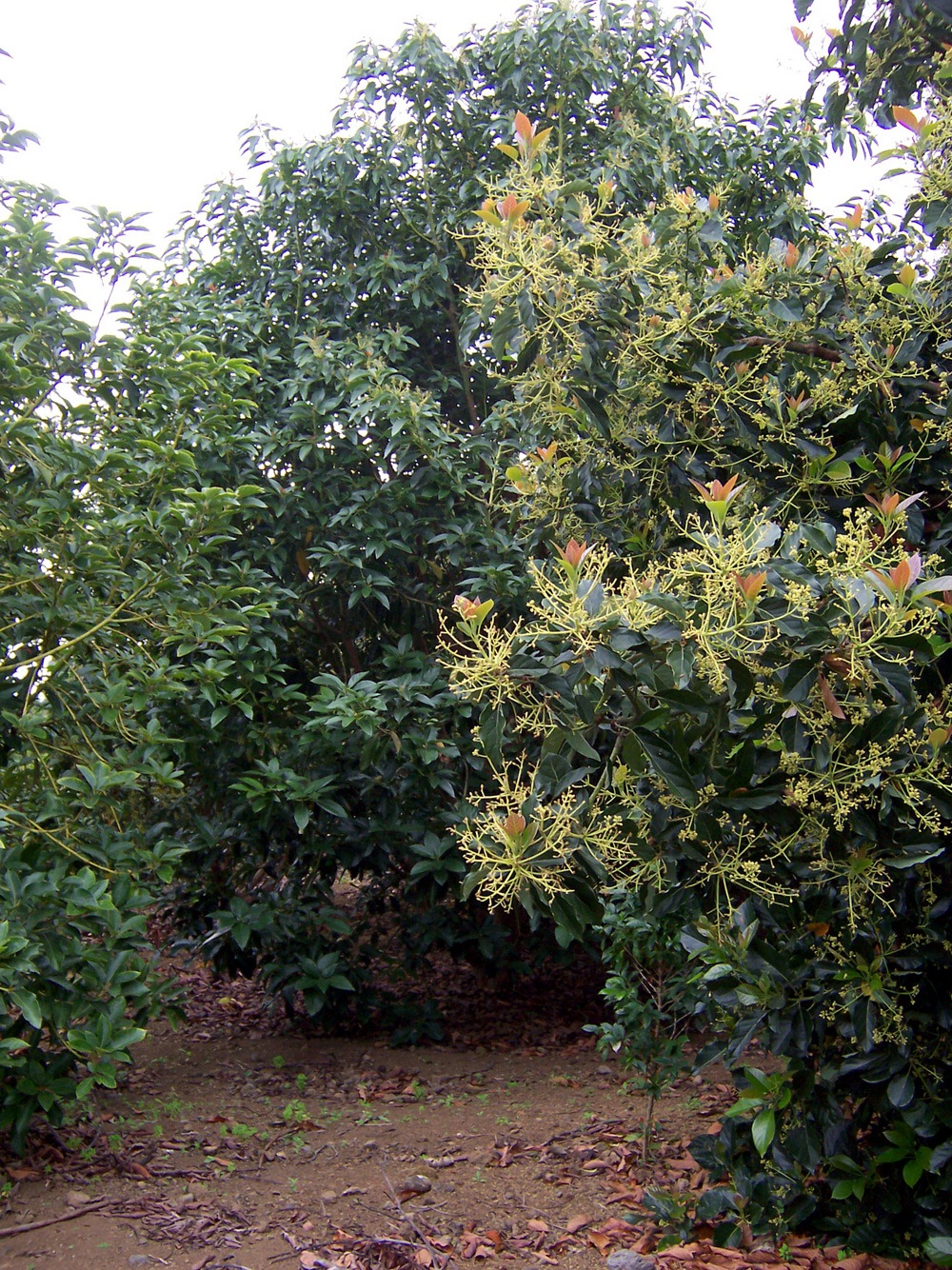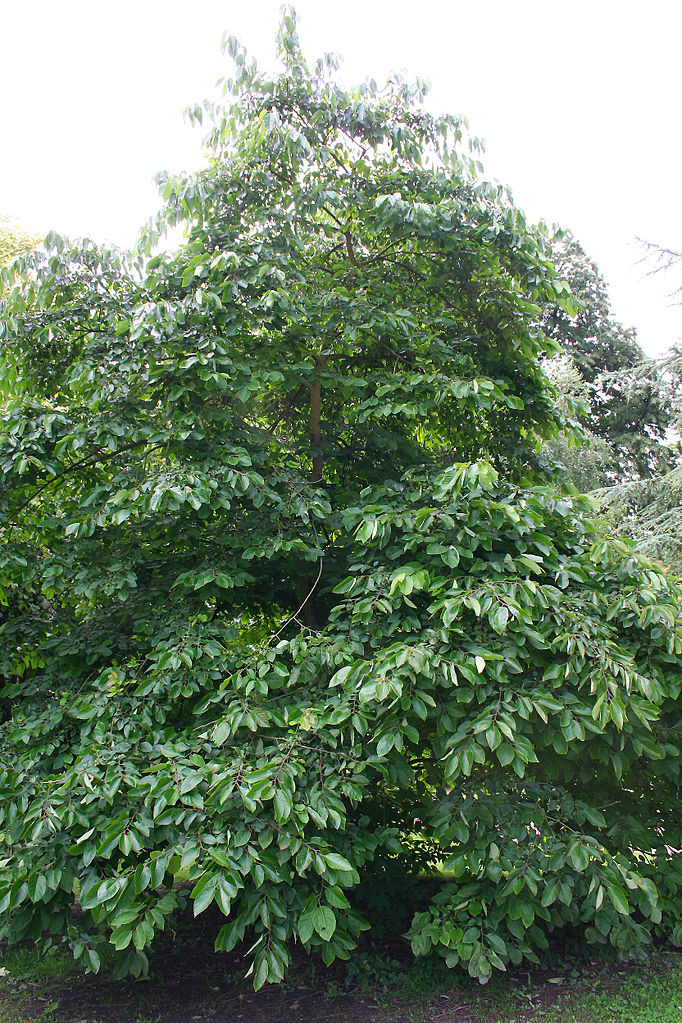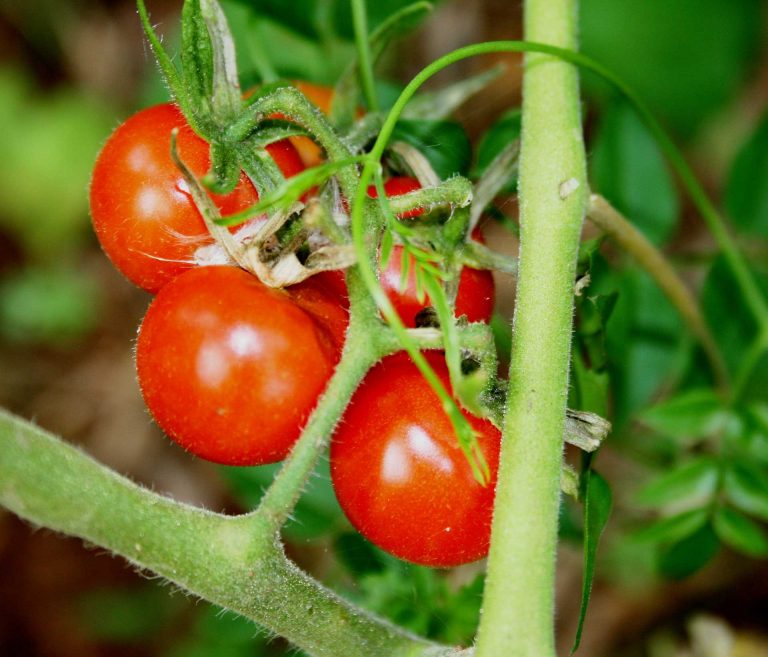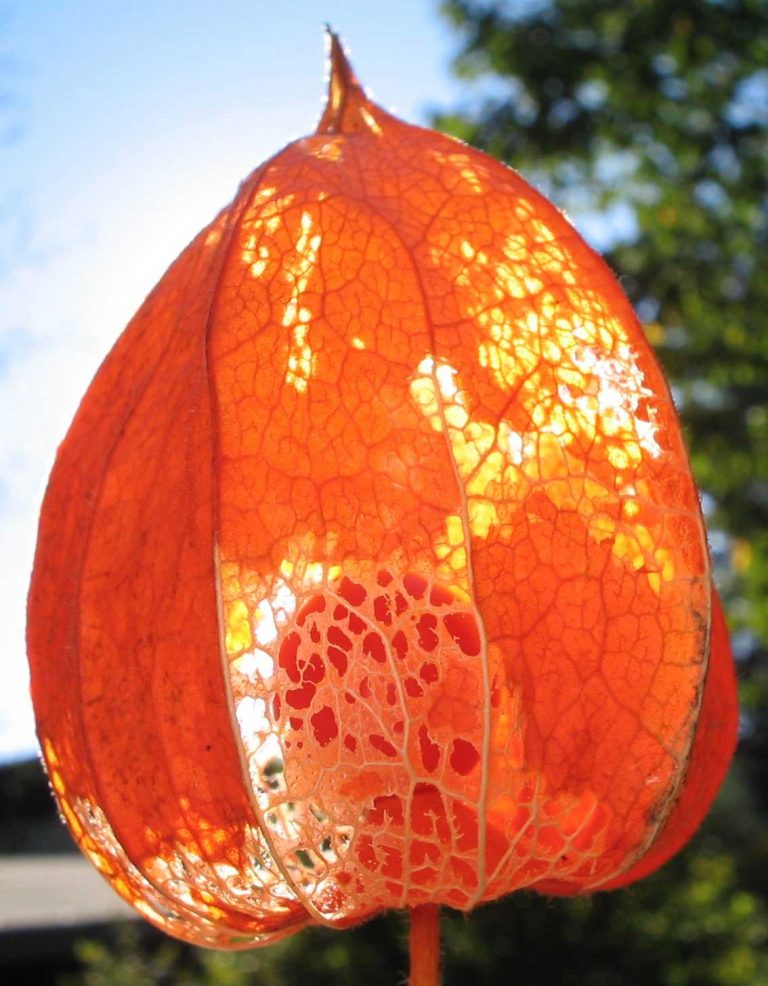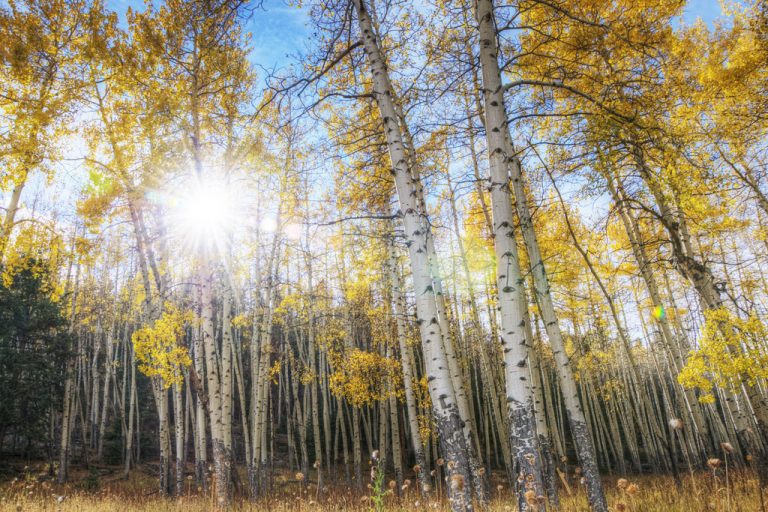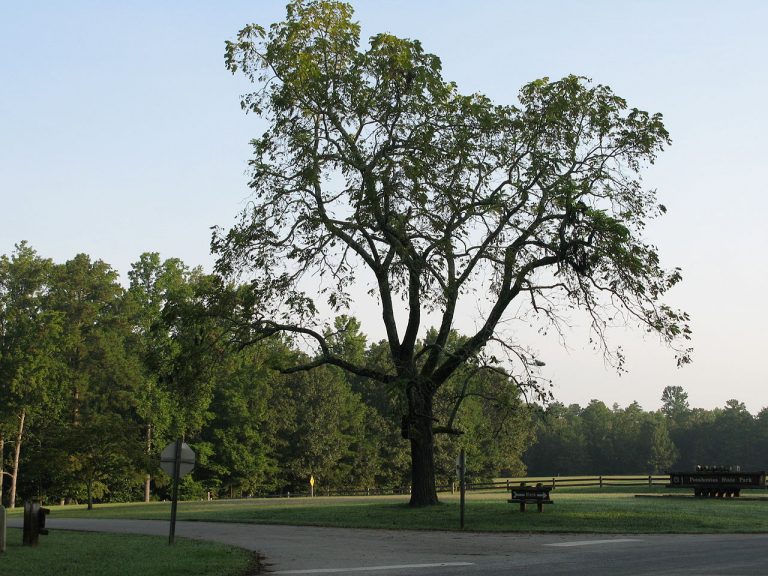Avocado Tree
Scientific classification
| Kingdom: | Plantae |
| Phylum: | Angiosperms |
| Class: | Magnoliids |
| Order: | Laurales |
| Family: | Lauraceae |
| Genus: | Persea |
| Species: | P. Americana |
| Binomial name: | Persea Americana |
The Avocado tree whose botanical name is Persea Americana belongs to the classification of trees of the flowering plant in the Lauraceae family, This includes the bay laurel and Cinnamon Camphor. Alligator pear and Avocado have references to fruits, which are in botanical terms, big berries with only one seed. These Avocados are of great value in the commercial market, they are grown in the Mediterranean and tropical climates, all over the world. Their characteristics are fleshy fruit, and green skin, either spherical, pear, or egg-shaped. In the market, after harvest, they get ripened. In order to establish a definite quality and quantity of fruits, they are propagated, self-pollinated and grafted.
Anatomy
This evergreen Avocado tree has several branches, with oval or elliptically shaped leaves of length 3 to 10 inches. They grow to a height of 40 to 80 ft. This tree bears perfect flowers that are small and green in color (with both female and male elements). The fruits of the avocado are pear shaped, rounded or oblong; it has a single big seed, which is 10 to 25 % of the fruit’s weight. Different avocado fruits differ in the content of moisture and oil, with a minimum of 5% and a maximum of 30%. The weight of the fruit varies from 0.25 to 3 lbs. The fruit’s skin differs in color and texture, they are woody/ pliable and rough to smooth. The skin color variations are reddish-purple, greenish-yellow, or black color. The flesh of the fruit varies from green to pale yellow to bright yellow when they are ripe, the good varieties have a buttery consistency, whereas, the inferior varieties are fibrous.
Habitat
The climate of the tropics is favorable for the majority of the Avocado trees. But certain trees grow well even in temperate zones. These trees are natives of the South and Central America. There are certain trees seen in the southern extremes of North America, like Florida and California and even in Indonesia, regions of Australia, Africa and also in the Caribbean. Mexico is the country which yields the maximum growth of Avocados, then come the United States and Indonesia.
GROWING AT HOME
Soil for Planting
Avocado trees flourish well in soil that is properly drained, fertile and of sufficient depth. Some weeks ahead of planting, enrich the soil by tilling the it and adding old cow dung, bone powder and cow blood. In case of planting it in pots, add a mix that has good draining property and of good quality. Avocado never grows for long in soil that is too clayey, it needs a properly drained soil. Suppose your soil is too clayey, then, you can create a mound by raising the bed, so that the top part of the tree’s root system is free from the rich clay.
Planting
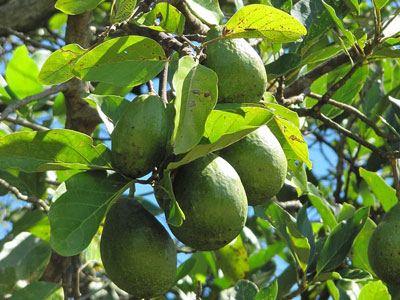
Photo by: Bruno Navez
Plant your avocado in places far from the winds and where there is bright sunlight. During summer there is a chance for the tree’s bark to be affected by sunburn. Therefore, when planting, give the trunk a mild whitewash. Once they are set, they become moderately sturdy.
The ideal time for planting your avocados is during spring if you are residing in the subtropical or tropical zones. Excavate the soil sufficiently enough to bury the root ball. Take out the plant from the pot, thin the roots and place it in the hole. Fill back the hole with water and mulch.
Watering
Frequently, water your avocado, but keep a limit, since avocados dislike their roots getting wet. Never pour excess water for your avocado! Excess watering is the main cause for roots to get rotten in the initial stage. Avocados do well with intermittent watering. Prior to ever watering, it is better to permit the roots to dry up.
Temperature and Humidity
Avocados are inhabitants of South and central America. They grow well in subtropical and tropical weather; however, they also grow where the climate is warm or cool. In case it is void of frost. Some cultivations are cold hardy, they endure temperature up to -5° C. However, about their temperature variation, be certain you go through the label prior to purchasing.
Flowering and Maturing
Avocados grow and develop into trees; they ripen only when picked. To ensure that your fruit on the tree is ready for harvesting, leave to develop fully, pick a single one and keep it safely inside. In case it gets ripe before drying up, then it is the right time to pick the rest of them. It is not a must that you pick all of them at a stretch, but avoid letting them hang for a considerable time, since this will tell upon the next years potential to bear fruits. The time for maturing differs in accordance with the climate, however, namely, the ripening of avocados takes place earlier in the subtropical and tropical regions and thereafter in the cooler and temperate zones.
Care
At the earlier stage, give, the avocado enough fertilizers. When they are fully developed and begins bearing fruit, nourish them with total fertilizer or Chook manure(egg shell manure of high nutrient content) when the fruit is established. Replicate the process in the beginning of autumn and summer.
Prune your avocado just for restricting its size and for giving it a shape.
Pest and Pesticides
In Florida the Avocado trees do not have any pests that affect them. However, cedar waxwings eat the leaves while migrating. The very tender fruits, flowers and developed fruits are eaten by rats, squirrels and mice. In certain orchards, the Avocado- Red Mite, botanically called Oligonychus Yothersi, is the usual enemy that attacks the leaves, in other orchards they do not. The red-spider, Thrips (tiny, slender insect), botanically called Teranychus Mytilaspidis, Red-Banded Thrips botanically called Selenothrips, and Heliothrips, botanically called Haemorrhoidalis, eat the avocado leaves and spoil the fruits periodically.
Harvest Month and Storage
The general method of harvesting avocados is by the use of poles held in hand and baskets. On the flats in California, machines are used to raise the pickers. Pick the fruits when they are fully grown and hard. You need regular practice to determine the exact time for harvesting, however it is not easy. A symbol of maturity is either loss in its glossiness, change in the color of the skin or a coat of brown color of the seed. Avocados are harvested either by special clippers or pruning snips. While picking, retain the pedicle attached to the fruit.
Ripening of the fruits is by picking them from the tree and keeping them aside. An indication of ripening is it becoming soft. Beginners may find it difficult to determine ripening of the hard skinned avocados. In case the fruits are picked quite early, they shrink and never get ripe. In certain cultivations, the fruits are preserved in refrigerators for pretty some time following ripening.
Varieties
You get a good collection of magnificent avocados. Look out for one that suits your garden the best.
The Hass Avocado Tree possesses the taste of nuts, it is cream in color and a very popular fruit, it retains its freshness for a long time, as such it is a very popular variety. The skin is rough like leather and the skin is deep-purple, which becomes black on ripening. Group A of height 10 meters and spreading areas of 6 meters is harvested from August to December.
Wurtz is an elegant choice and a dwarf cultivation in small gardens. In addition, it is best as potted plants and produces appetizing green fruits that are of moderate size hanging on the branches. Group “a” of height 4 meters and a spreading area of 6 meters are best reaped during August to October.
Fuerte possess fruits in the shape of pear which are of tiny to moderate size. The tree bears fruit on branches that are spreading out. The skin of this fruit is green in color of rough texture and excellent flavor. Group B of height of 12 meters and spreading areas of 8 meters are reaped during the months of April to June.
Bacon is suitable in climates that are cold, because it withstands temperature even as low as ( -) 5°C.The fruit, full of flavor bears on the branches of the tree that spreads wide. Group B of height 9 meters and a spreading area of 4 meters. These fruits are reaped during the months from March to May.

Having discovered a fondness for insects while pursuing her degree in Biology, Randi Jones was quite bugged to know that people usually dismissed these little creatures as “creepy-crawlies”.

